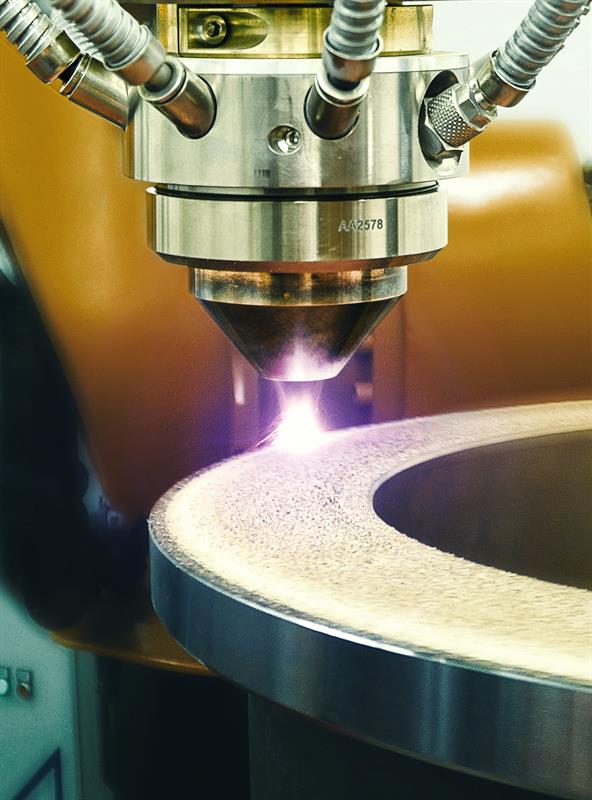The enormous container ships that cross the world’s oceans need powerful diesel engines with outputs of up to 108,000hp and as many as 14 cylinders. The shaft that drives the propeller has a diameter of about 600mm, weighs up to 300 tonnes, and rotates 84 times a minute. It rests inside hydrodynamic bearings that are naturally subject to heavy wear as the shaft is in direct contact with and slides over the bearing’s surface. A film of lubricant reduces the inevitable friction, but doesn’t develop fully until the oil pressure rises.
Especially when engaging or disengaging the shaft, the protective film of oil is not yet or no longer sufficient to prevent direct contact between the surfaces. The affected parts of the bearing are therefore subjected to considerable friction and wear, which significantly reduces their life expectancy.
A commonly used way to improve the performance of these bearings is to cast their halves with an unbroken surface layer of a tribological (wear-reducing) alloy. The conventional process used for this is extremely labour-intensive: The metals are melted and worked at 700°C, then, in a laborious finishing phase, around 90% of the material is removed again to obtain the desired final shape. Little has changed in this process over the last century.
 Today, latest-generation lasers can be used with a powder nozzle for DMD, yielding sizeable benefits: the metal alloy is fed in the form of a dry powder via the nozzle coaxially to the laser and melted onto the inside of the concave steel bearing shells. The laser permits accurate partial attachment of the alloy. It is only necessary to apply the expensive alloy to about 20% of the surface using this technique, compared to 100% with the traditional casting method. Use of a laser also saves time and energy, since only a small amount of metal needs to be melted in each case.
Today, latest-generation lasers can be used with a powder nozzle for DMD, yielding sizeable benefits: the metal alloy is fed in the form of a dry powder via the nozzle coaxially to the laser and melted onto the inside of the concave steel bearing shells. The laser permits accurate partial attachment of the alloy. It is only necessary to apply the expensive alloy to about 20% of the surface using this technique, compared to 100% with the traditional casting method. Use of a laser also saves time and energy, since only a small amount of metal needs to be melted in each case.
The new generation of additive manufacturing is especially well-suited for bearings that are in constant use, have a large diameter, and are subjected to large bearing forces and high rotational speeds. It can also be used to inexpensively repair defective bearing shells and restore them to a like-new condition.
The ability to quickly change the alloy and apply coatings of nearly any kind of metal opens up incredible prospects for developing new products. AM enables completely new production processes that are able to flexibly accommodate customer wishes in a minimum of time.
Recently, the Berlin-based company, ADMOS Gleitlager began using a laser system from O.R. Lasertechnologie. ADMOS now makes sliding bearings using a robot-assisted laser system, a 6kW fibre laser, and two high-power coating heads in the form of powder nozzles. One of the advantages of this approach is that different materials now bind more firmly to one another. Furthermore, this method makes it possible to completely eliminate several steps while minimising the required finishing work afterward.
It also reduces materials costs by between 50% and 80% thanks to resource-efficient application, and energy costs are 50% to 70% lower than for conventional casting of alloys.
Jörg Hosemann, CEO of ADMOS Gleitlager, said: “The new laser system opens up a whole new world of possibilities for us: faster production and delivery at short notice, as well as enormous potential for slashing costs. I expect the investment in new laser equipment to pay for itself in no time.”





